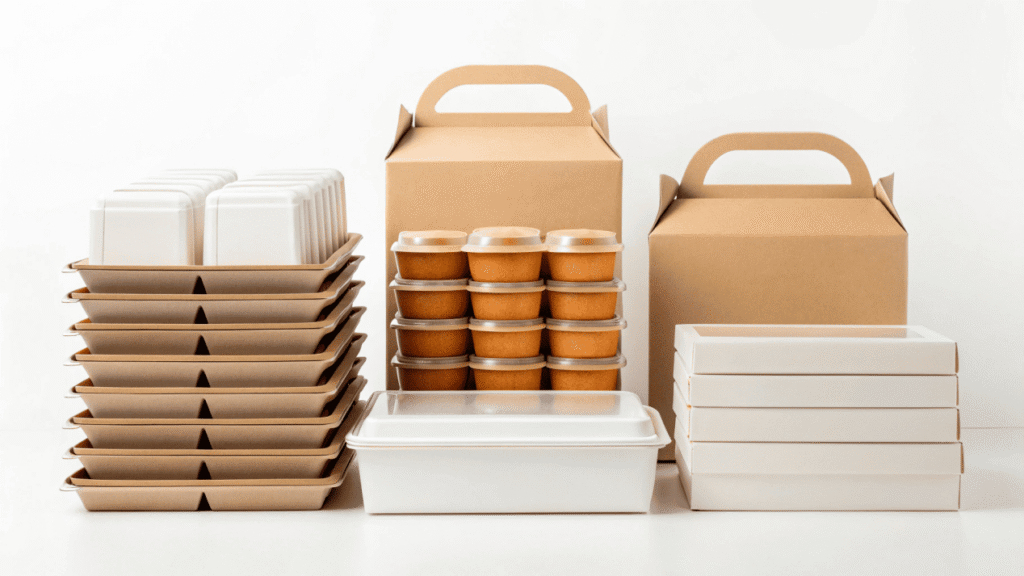A single failed container can ruin a catering event. Leaks, collapses, and soggy food destroy your hard-won reputation and lead to angry clients and negative reviews.
Mastering bulk packaging requires a strategy. This means choosing the right box designs, using materials that resist grease and moisture, planning your supply chain for seasonal peaks, and offering eco-friendly options to meet modern client demands.
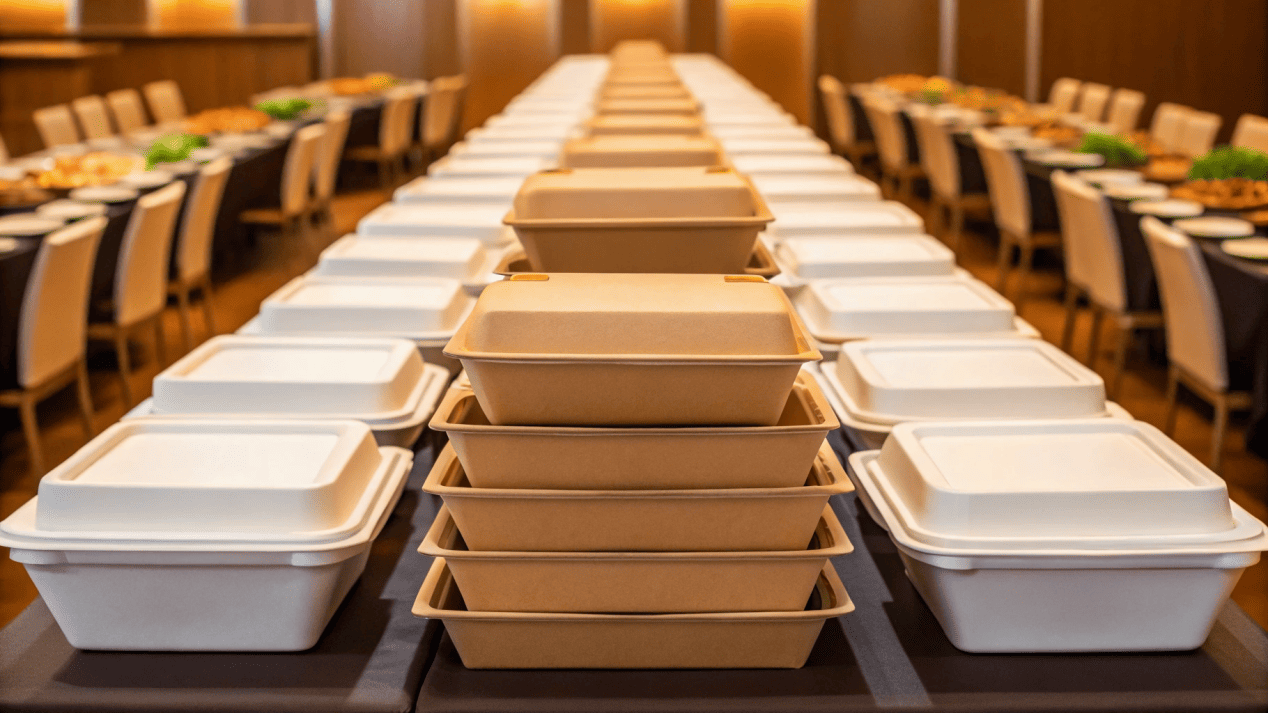
I once got a call from a caterer in a total panic. She had landed a huge corporate lunch order, her biggest client yet. To save money, she used standard takeout boxes from a local wholesaler. By the time the food arrived at the client's office, the sauce had leaked through the bottom of half the boxes, creating a huge mess. Her reputation was on the line because of a box. That day, we didn't just talk about containers; we talked about building a system to protect her brand. It's a lesson every food business needs to learn: your packaging is your ambassador when you're not in the room.
Which Box Design Is Right for Your Catering Menu?
You have a diverse menu, but you use generic boxes for everything. This leads to crushed cakes, jumbled meals, and a presentation that doesn't match the quality of your food.
Choose the right tool for the job. Use stackable trays for individual meals, large pans for buffet items, specialty bakery boxes for delicate goods, and gable boxes for upscale boxed lunches.
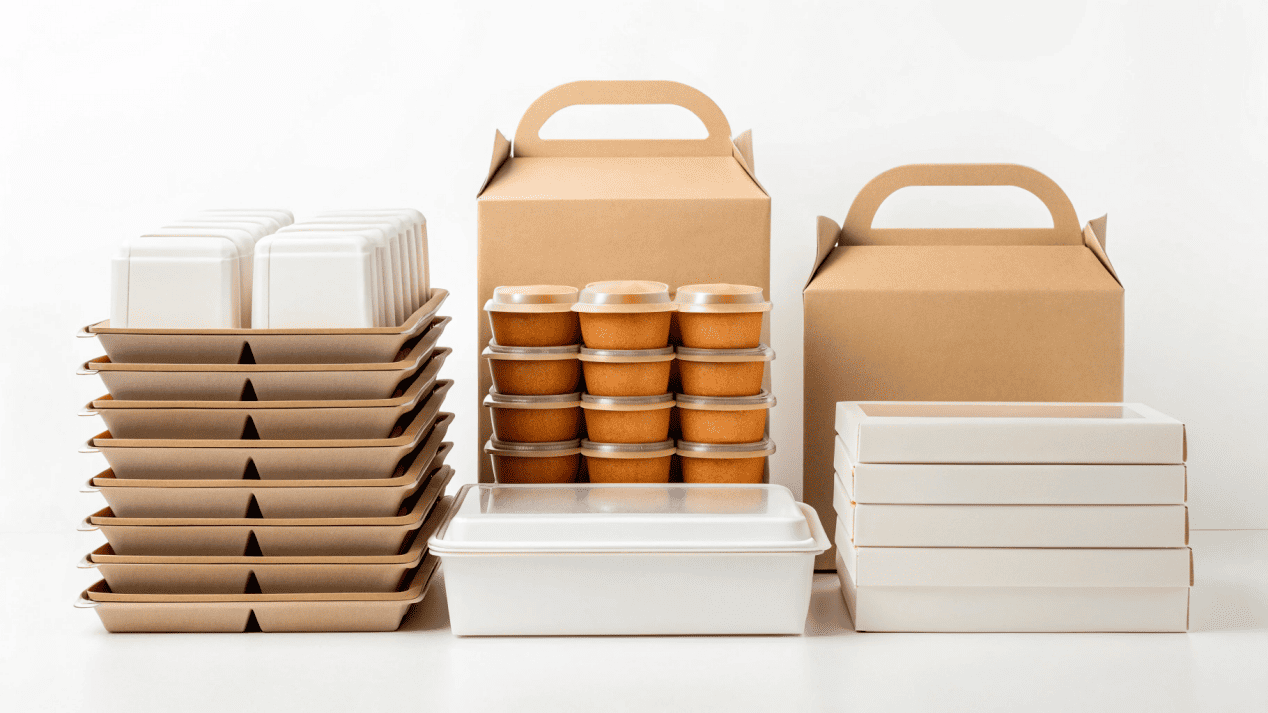
Choosing the right container design is the first and most important step. As an engineer, I think of packaging as a piece of equipment designed for a specific task. You wouldn't serve soup on a flat plate. In the same way, you shouldn't put a delicate pastry in a box that's meant for a hefty portion of lasagna. Each box design has features engineered to solve a particular food service problem. For example, the flat top on a stackable meal tray isn't just for looks; it provides a stable platform, allowing you to stack dozens of meals in a van without crushing the ones on the bottom. Understanding these designs helps you protect your food and present it beautifully every time.
The Right Tool for the Job
| Box Design | Best For | Key Features & Engineering |
|---|---|---|
| Stackable Meal Boxes | Catering individual meals, corporate lunches, meal prep. | The flat-top design is critical for stable stacking during transport. Many have internal compartments that act as structural dividers, preventing food from mixing and reinforcing the box. Secure locking tabs prevent accidental opening. |
| Large Catering Pans | Bulk salads, pasta, entrees for buffet-style service. | The wide, open format is for easy serving. The corners are reinforced to handle significant weight without buckling. We often pair these with clear PET lids that snap on securely for visibility, so clients can see the food without opening it. |
| Bakery & Pastry Boxes | Cakes, donuts, and other delicate baked goods. | These are designed to protect fragile items. They often use a one-piece "clamshell" or fold-up design that creates a rigid structure around the product. The optional clear window adds visual appeal without compromising strength. |
| Gable Boxes ("Barn Boxes") | Upscale boxed lunches or grab-and-go meals. | The integrated handle makes it easy to carry, which is a major advantage for event attendees. The unique shape offers a large, flat surface that is perfect for branding and making a strong visual statement. |
How Can Your Packaging Conquer Heat, Moisture, and Grease?
You've cooked the perfect meal, but the container can't handle it. Sauces leak, fried food gets soggy, and grease stains create an unprofessional look. The packaging has failed.
High-performance packaging wins this battle with a crucial inner lining. A PE or compostable PLA lining creates a waterproof and grease-proof barrier, while strategic venting can prevent crispy foods from getting soggy.
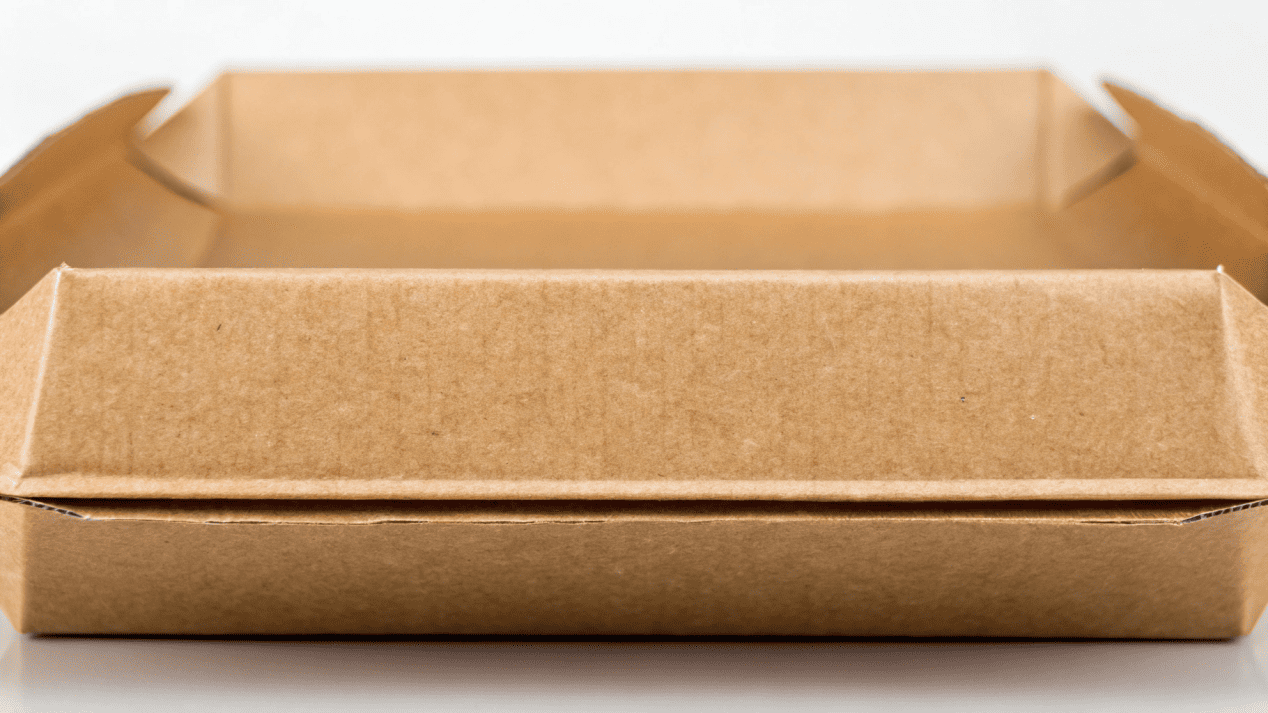
A catering box is in a constant battle with physics. From my engineering background, I see it as a system that has to manage multiple forces at once. Steam wants to escape and soften the paperboard. Sauces and oils want to leak through any weak point. A standard paper box will lose this battle every time. The key to winning is the internal lining. This is a thin layer of material that we bond to the inside of the paperboard. Think of it as a shield. The most common is a PE (polyethylene) lining, which is very effective. But today, most of my clients choose a PLA (polylactic acid) lining. It's a plant-based bioplastic that offers the same excellent grease-proof and waterproof performance but is also commercially compostable. For fried foods like chicken or french fries, we can even add small, strategically placed vents to the lid. These allow steam to escape, keeping the food crispy without losing too much heat. This is the science behind a box that really performs.
How Do You Manage Supplies for Catering Season Peaks?
The busy holiday season arrives, and you're suddenly scrambling for packaging. You're forced to use whatever you can find, your branding is inconsistent, and you risk running out completely.
Treat your packaging supply like a critical ingredient. Analyze your seasonal peaks, forecast your needs with your supplier in advance, and order with enough lead time. Always build in a 15-20% buffer stock.
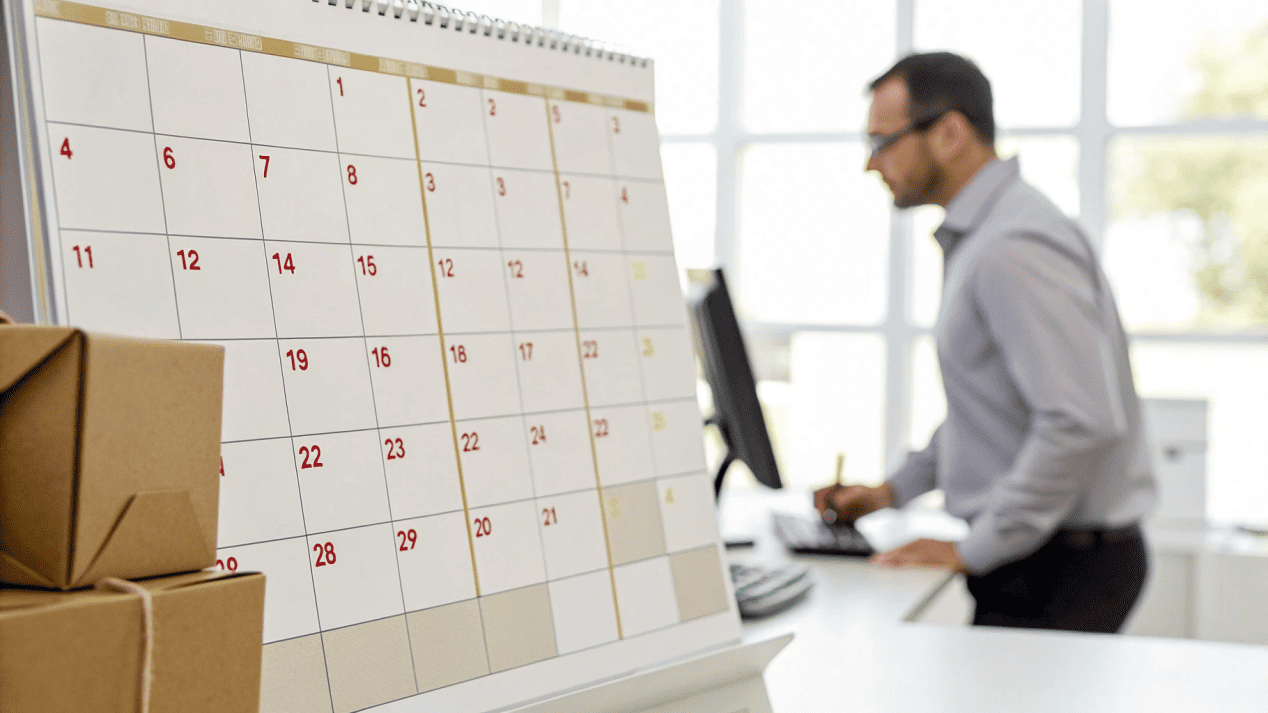
Your busy season should be your most profitable time, not your most stressful. I tell my clients this all the time: your holiday, graduation, or wedding season success is determined by the planning you do three to six months earlier. You cannot wait until November to order your packaging for the December corporate party rush. High-quality, custom-branded packaging is not an off-the-shelf item. It takes time to produce and ship. The best strategy is to work with your packaging partner. We sit down with our clients in the "off-season" to map out their entire year. We look at their sales data from last year to identify the peaks. Then, we create a production schedule together. This collaborative forecasting ensures they get their containers exactly when they need them. We also help them build in a buffer stock—usually 15-20% extra. This small extra inventory is their insurance against a sudden large order or an unexpected rush. It's what allows them to say "yes" to more business with confidence.
What Are Your Best Eco-Friendly Catering Options?
Your clients are asking about your sustainability practices. Your disposable packaging is the most visible part of your answer, and standard plastic or foam containers send the wrong message.
Offer eco-friendly packaging as a key selling point. Bagasse (sugarcane fiber) containers are strong and compostable. PLA-lined paperboard offers leak-proof performance. Always look for FSC-certified paper to prove responsible sourcing.
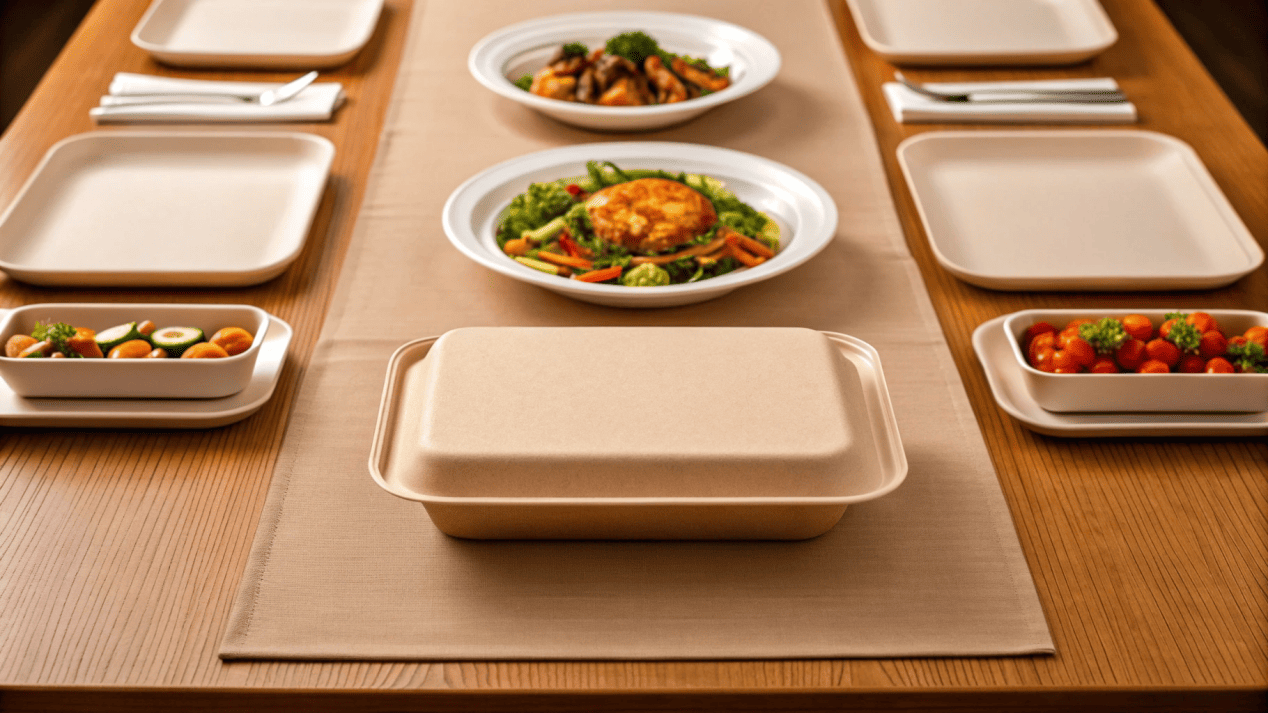
Today, choosing sustainable packaging is no longer just a "nice to have"; it's a powerful business strategy. More and more, corporate clients have their own sustainability goals they need to meet, and they will choose a caterer who helps them achieve those goals. Your packaging is a direct reflection of your brand's values. When your client sees you using smart, eco-friendly materials, it reinforces their decision to hire you. I often recommend a combination of materials. For example, use bagasse containers for hot entrees and side dishes. Bagasse is made from sugarcane pulp, a byproduct of the sugar industry. It's strong, handles heat well, and is fully compostable. For items that need a lid or custom printing, PLA-lined paperboard is a perfect choice. It gives you the structure and branding capabilities of paper with a compostable, plant-based lining. And always, make sure the paperboard itself is FSC-certified. This tells your clients that the paper comes from responsibly managed forests. It's a small detail that builds a lot of trust.
Conclusion
Your bulk and catering packaging is a critical part of your service. A smart strategy transforms it from a potential weakness into a powerful tool that protects your food and brand.
